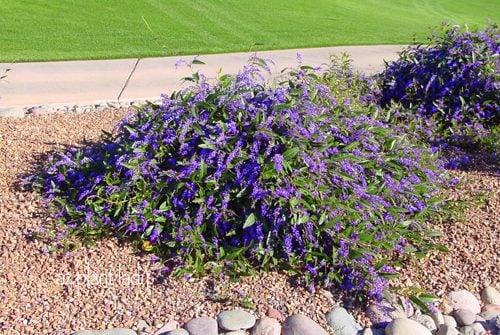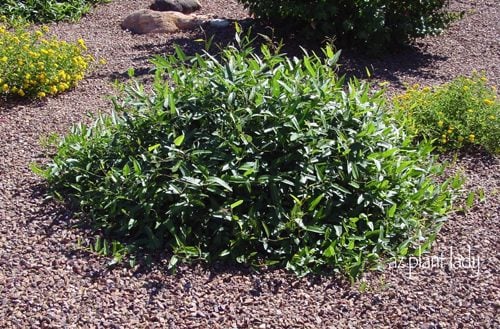Add Lilac Vine to Backyard Flower Gardens
Updated: Oct. 30, 2023
Create a beautiful backdrop in your backyard flower gardens by planting vines.

As spring approaches, step out into your garden for a moment and see where vines can create a beautiful backdrop to your backyard. Gardeners often focus on growing flowers in containers and in beds. But sometimes we forget that we can grow flowers on bare walls and fences by planting flowering vines, which can transform a wall into a beautiful backdrop. One of my favorites is purple lilac vine.
Discover easy ways to use vining plants all around your garden.
Lilac Vine: Care and Growing Tips

- Botanical name: Hardenbergia violacea
- Common name: Purple lilac vine
- Zones: 9 to 11
- Light needs: Partial to full sun
My backyard is enclosed by a block wall that I don’t particularly like to look at. So I like to grow lilac vine up on the wall. In the middle of winter, purple flowers appear that last until early spring. Plant it in a sunny spot with well-draining soil for the best flowering. It does require a trellis for support.
This plant is native to Australia and may also be known as Australian lilac or purple coral pea. While it is not related to the more commonly known lilac bush (Syringa) that is beloved for fragrant spring flowers, lilac vine is a good alternative with similarly colored blooms for southwestern desert gardens.
Use Lilac Vine as a Ground Cover Plant

Most of us are familiar with seeing vines growing up on a wall or fence. But, have you ever thought of using them as a ground cover as well?
Years ago, when I worked as a horticulturist for golf courses, I was always wanting to try something new in the feature areas. So one year, I planted purple lilac vines as a ground cover.
I must admit, that the results were better then I expected. The vines did very well on the ground. We would trim them as needed to keep them from growing too large (about twice a year).

Even when the vines weren’t covered with flowers, they still made an attractive ground cover.
Every three years, we pruned the vines back severely to about 1 foot, which would rejuvenate them. In fact, the vines that I planted along the golf course are still there over a decade later.
Here’s when to prune lilacs.
How to Choose the Best Flowering Vine for Your Landscape
When selecting a vine for your backyard flower garden, ask you local nursery professional the following questions.
- Is the vine considered invasive in your climate?
- Will it need a trellis, or can it climb without one?
- What type of exposure is best —full sun or shade?
Next find out why your lilac leaves are turning brown.